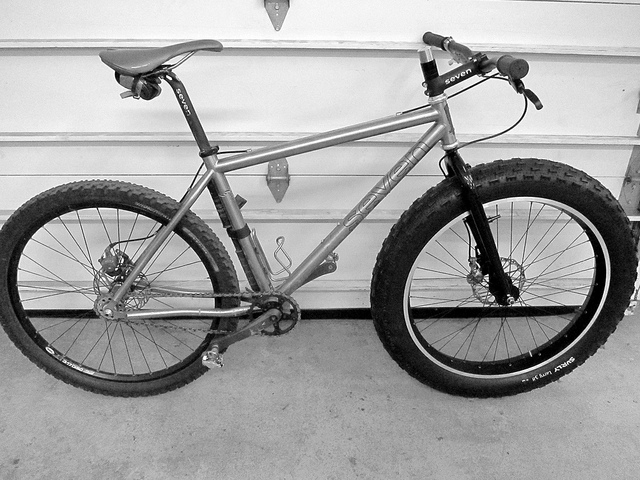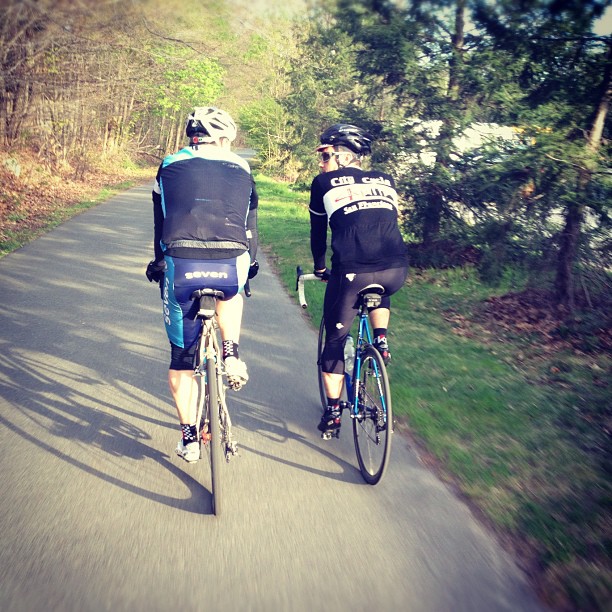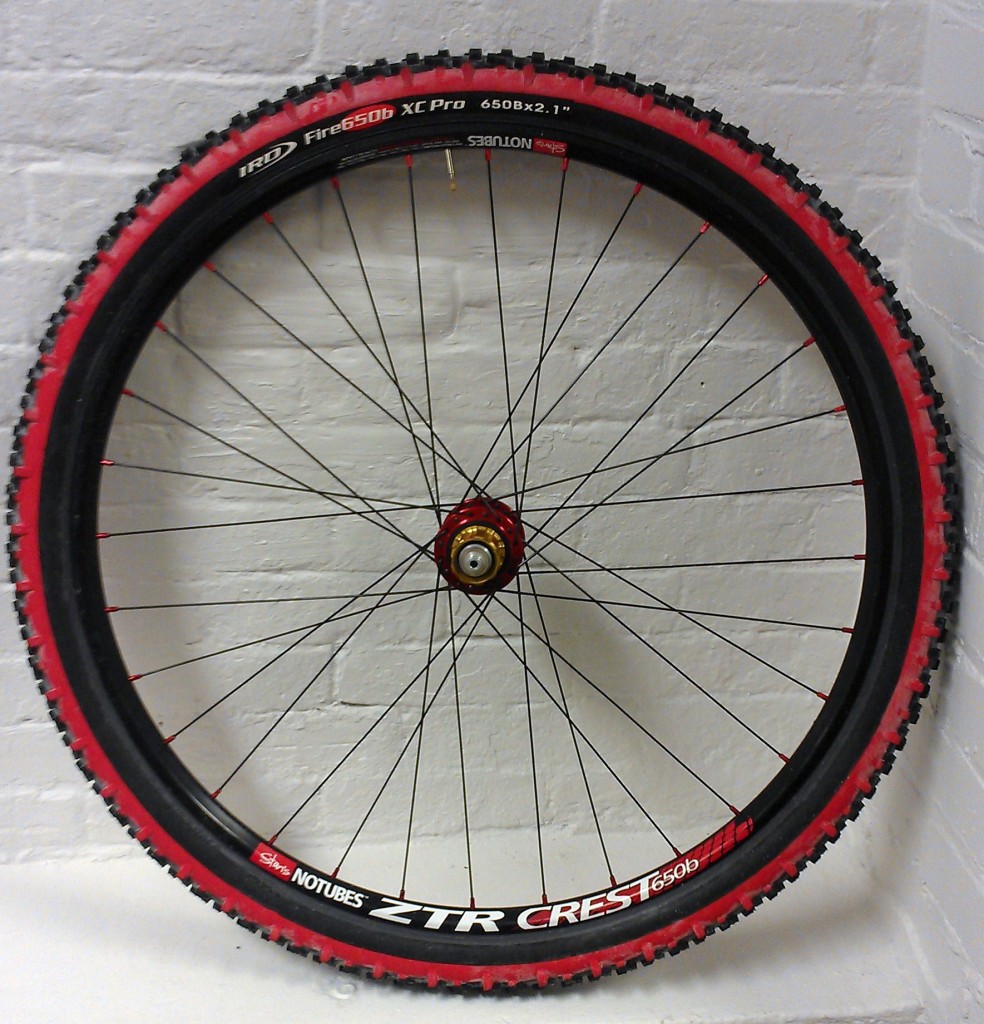Author: Seven
Morning Roll
Hand Finish
The Hand Finish
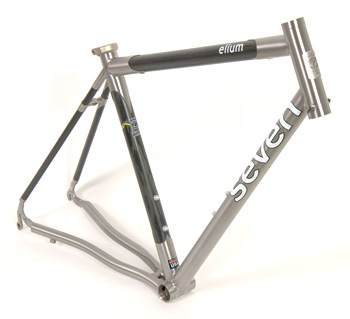
You can get your custom Seven painted just about any way you want. Still, for our bare Titanium bikes, we prefer one finish and only one finish, and people wonder why.
Just to describe what we do, so you have some context: First we take the best US-milled 3-2.5 Titanium tubing available, and we cut, butt, miter and cope it to look like a bike frame. Then we load it into a frame jig and weld it together, checking alignment 17 times throughout the process. Finally we face and thread the bottom bracket, before passing the complete frame to our finishers.
That’s when the fun starts.
The finishers take the frame and wheel it out with a buffer. The first pass eliminates discoloration around the welds. Then they go at it by hand with some Scotchbrite, before adding decals, head badge and any other accessories on the build sheet. Each bike takes roughly two hours to finish. It takes a certain amount of patience and strong forearms.
The result is a clean, lustrous look. We like that it exposes every last piece of craft we’ve put into the frame. You can see the quality of the tubing, the quality of the welds. It lays bare our process.
The reason it’s the only finish we offer is that it’s the only one that will hold up over the lifetime of the bike. If you scratch it, you can Scotchbrite it out and return it to new. Beat it up over time, we can fix it. There is no point in the future of one of our frames that we can’t restore its original shine. This is not true of any other Titanium finish we’ve seen or experimented with.
As with everything we do at Seven, “by hand” just seems to yield the best result.
650b-Specific Mountain Bikes: A Perspective From Seven Cycles
When Nino Schurter won the first World Cup mountain bike race of the season in Pietermaritzburg, South Africa on a bike with 650b wheels, it sent a ripple through the cycling universe. Anyone viewing 650b – essentially a size midway between 26″ and 29″ – as a novelty wheel up to that point, suddenly had to take this new/old wheel standard very seriously.
Seven has been building 650b-specific mountain bikes for a few years now, and in our experience, 650b gives a nice balance between the handling of a 26″ wheel and the obstacle clearance of a 29″ wheel. It manages to maintain momentum better than the 26″ and dive through switchbacks better than a 29″. Certainly, for smaller riders interested in the benefits of a larger wheel, the 650b standardcan beeasier to build a well-fit frame around thana 29″.
What we find, time after time, is that there is no one-size-fits-all solution for building a great bike, and we think 650b is a good example of the big benefits to be gained by thinking outside of the conventional wisdom.
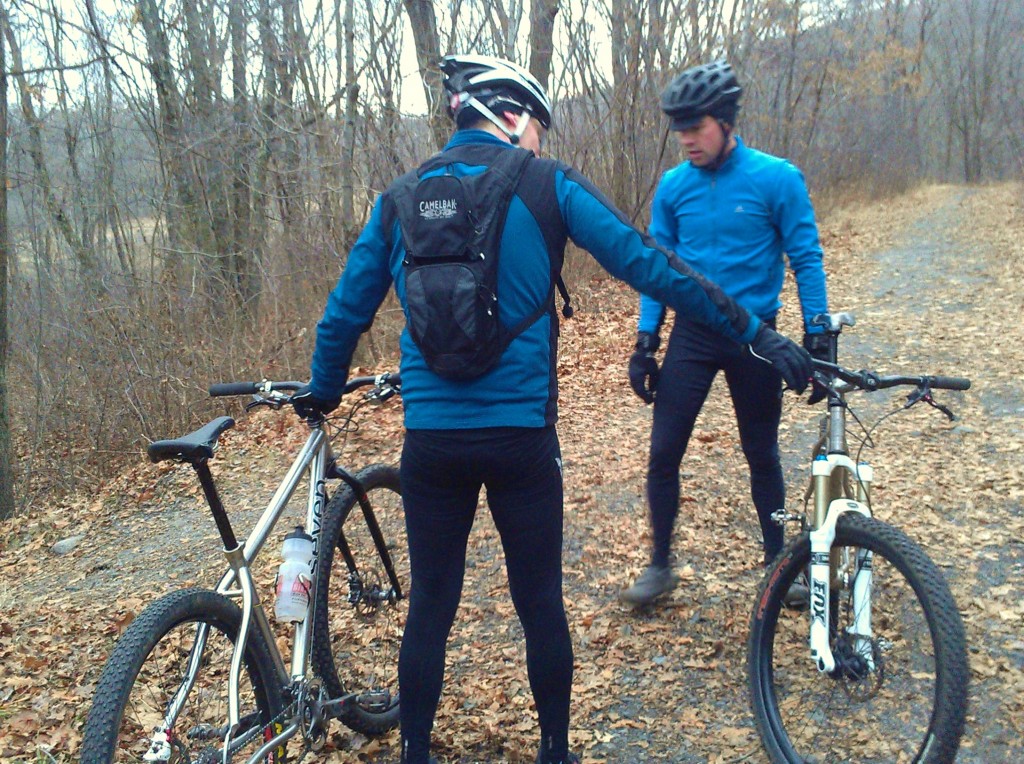
At Seven, several of our employees are riding 650b for their everyday trail bike, including Joe Wignall who has his set up single-speed with an eccentric bottom bracket and belt drive system, and John Lewis who stuck with chain drive, but is also running single speed. These bikes give a pretty pure trail experience. You work for the climbs. You pick your way through the more technical descents. There’s a lot of stripped down, old-school fun to be had on bikes like these.
The industry looks to be expanding into 650b for the coming season, and while the cynical among us might view that as just another opportunity to sell stuff to cyclists, the benefits of 650b are pretty tangible, once you take the time to ride it.
Mike Broderick and Mary McConneloug Proto IMX 29ers, Part Two of Two: The Feedback
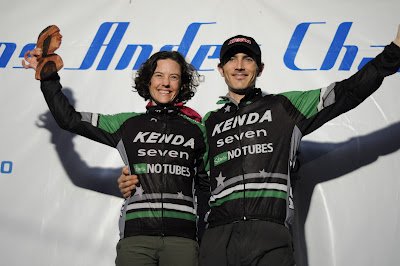
It’s hard to transition from Chile to Northern California to South Africa with a stable of race bikes, enough tools to build them up and break them down, all the other clothing and gear you need, and a shred of remaining sanity to carry you through the first mountain bike World Cup race of the season.
But that’s exactly what Seven riders Michael Broderick and Mary McConneloug did over the last 6 weeks, and their brand new Seven IMX SLX race bikes went along for a maiden voyage on some of the most challenging dirt in the world.
Mike reported back to us from the post-race wind down in South Africa:
“Mary and I literally turned hundreds of heads as we spent the weekend on our new IMX bikes at the World Cup in Pietermaritzburg. The bikes stand apart visually from our previous frames and the majority of the bikes being used by our competitors. The carbon Ti lugged IMX frame design is visually stunning and we were able to build these bikes up to the limit. They really look fantastic!â€
If looks could kill, they wouldn’t have the race though. Mike added, “Those capable of looking beyond the initial bling (including all our on-site sponsors) were impressed especially by the inclusion of the 44mm head tubes as these (or alternative oversize head tubes) are fast becoming an industry standard.â€
We built these bikes specifically to give Mike and Mary critical advantages in the toughest race conditions and according to Mike, performance improvements were obvious straight away. “The bikes ride with a lighter touch. Changing directions requires less effort in tight, low-speed situations, and they exhibit an overall greater level of confidence, inspiring control throughout the majority of demanding off-road situations.â€
Mike and Mary are particularly agile riders, so we aimed for a more lively ride, an overall more manageable bike for all trail purposes, which meant shortening the chain stays for maximum obstacle clearance capability. Mike said, “Mary and I both feel an increased ease when we lift up and over obstacles. Mary was especially tuned in to the ease of being able to manual her bike over trail obstacles without pedal input. This allows for a quicker trail read as last minute input and corrections are more significant and accurate. This, along with the stiffer front end, translates into greater confidence when hanging it out at high speed.â€
He also said,
“The bikes absolutely track quicker around corners when traditionally steered (cutting through the apex) as well as with our preferred hairpin corner attack (hugging the inside of the corner before the apex, steering the front wheel through while initiating a rear brake skid to slide the rear). We both have a good stable feeling on these bikes enabling us to keep our feet clipped in while performing this move all the way through to letting off the brake, regaining traction and pedaling out for a quick exit.â€
How’s that for a pro maneuver?
Shorter chain stays and subsequently shorter overall wheelbase make the bike more agile, but the oversized head tubes give them maximum stiffness and stability. Mike and Mary appreciated that stability as well.
Mike said,
“The increased front end stability is probably most apparent when muscling the bike through low speed trail obstacles that take maximum strength and input on the bars and pedals at the same time. A good example would be when out of the saddle splitting a large trail feature (between the tires) and torquing the pedals and the bars simultaneously to try and move forward. I can feel that there is far less flex and a better power transfer in these cases. The increased stiffness at this point also really helps with the confidence when in a rough spot and looking to commit to a feature that is at the limits of our confidence levels.â€
As you can imagine we’re anxious to see how the bikes perform at the next round of the World Cup in Houffalize, Belgium next month. As we type, Mike and Mary are getting their gear together, breaking everything down again for shipping and trying to keep their bodies on track for what promises to be a grueling and exciting MTB season.

